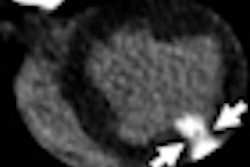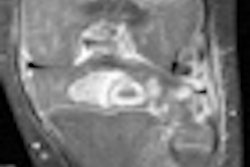Prostate cancer patients who receive MRI-guided salvage brachytherapy following local failure experience steady sexual decline as well as worsening bowel and urinary symptoms after treatment, according to a Boston-based multihospital study.
Patients with an interval to re-radiation of less than 4.5 years may have a greater risk of bowel dysfunction, and caution may also be needed in patients who received prior brachytherapy.
These findings, from a prospective phase II study of a series of patient-reported quality-of-life questionnaires, were reported in the October-December issue of Brachytherapy (2009, Vol. 8:4, pp. 345-352).
The five-year study involved 25 men and commenced October 2000. All had been diagnosed with biopsy-proven local recurrent prostate cancer at least two years following radiation therapy. Twelve men had received a 66-70.2 Gy radiation dose from external-beam radiation therapy treatments, one had supplemental brachytherapy, and one had supplemental hormone treatment for four months. Eleven patients received prostate brachytherapy treatment.
The patients received a minimum dose of 137 Gy to the MRI-defined target volume of the prostate, using iodine-125 brachytherapy seeds.
To evaluate their treatment, a total of 20 men completed questionnaires prior to salvage treatment and at three, 15, and 27 months after treatment. They assessed sexual dysfunction, bowel dysfunction, obstruction, and irritation, using a scoring system ranging from 0-100 in which 0 equaled minimum dysfunction and 100 equaled maximum dysfunction.
Sexual dysfunction steadily worsened over time, according to principal investigator Dr. Paul Nguyen, director of prostate brachytherapy at the Dana-Farber Cancer Institute. The mean reported score (from 0 to 90) prior to re-irradiation was 55.5, which steadily worsened until reaching 81.1 three years following treatment. Prior to re-irradiation, 64% reported they had partial firm erections, compared with 18% at three years.
Patients with evaluable obstruction/irritation scores initially worsened and then improved at 27 months, almost matching pretreatment levels. Bowel dysfunction scores also peaked at 15 months and then steadily declined.
Men who had received prior brachytherapy were also the patients who had received initial radiation therapy less than 4.5 years from salvage brachytherapy treatment. They reported a mean bowel dysfunction score of 16.1, compared to a mean score of 7.7 reported by men who had treatment more than 4.5 years ago.
While acknowledging the small size of the patient cohort, the authors recommended that clinicians advise patients about these known side effects. Radiation oncologists may also want to consider different rectal dose distributions during salvage radiation therapy for patients who develop local failure within 4.5 years of initial treatment and also for patients who initially received brachytherapy.
Related Reading
Salvage rad therapy not toxic after prostatectomy, October 1, 2009
Salvage radiotherapy for recurring prostate cancer enhances survival odds, June 17, 2009
Preservation of sexual function excellent after prostate brachytherapy, August 22, 2007
Prostate cancer treatments yield different quality-of-life outcomes, June 11, 2007
Copyright © 2009 AuntMinnie.com


.fFmgij6Hin.png?auto=compress%2Cformat&fit=crop&h=100&q=70&w=100)





.fFmgij6Hin.png?auto=compress%2Cformat&fit=crop&h=167&q=70&w=250)











